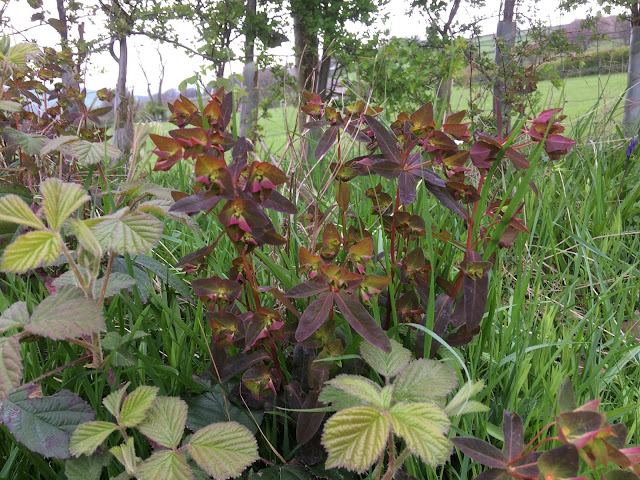It was nice to see the thriving colony of Fairy Foxglove (Erinus alpinus) on Old Bridge, Ilkley. Far too early for flowers though.
(photo by Jerzy Opiola, Wikimedia Commons)
Not a rare plant, but I forget how prolific Few-flowered Garlic (Allium paradoxum var. paradoxum) is along the Wharfe. All those bulbs where there should be flowers.
A surprise find on a tree stump well away from gardens was Trailing Bellflower (Campanula poscharskyana), but this is not my first find of this species on an isolated river bank.
On the river bank at Addingham, and likely of planted origin, was Star Jasmine (Trachelospermum jasminoides).
Moving up hill away from the river towards Langbar, I was surprised to find a Chameleon ... i.e. Sweet Spurge (Euphobia dulcis 'Chameleon'). The hedgerow along Langbar Lane also had the hybrid hawthorn Crataegus x subsphaerica (to be seen again later in the hedge bounding Ilkley golf course).
Another nice find on Langbar Lane was a particularly robust lush clump of Alternate-leaved Golden-saxifrage (Chrysosplenium alternifolium).
A rubbish photo but this odd Daffodil (Narcissus 'Pipit') lit up a shady beck bank at Nesfield. I'm not even going to try linking this to a named Daffodil species or hybrid! Google it for a better image.
Back towards Ilkley were Garden Solomon's-seal (Polygonatum x hybridum) and this striking, and very early into bloom this year, Broom (Cytisus scoparius subsp. scoparius f. andreanus).













